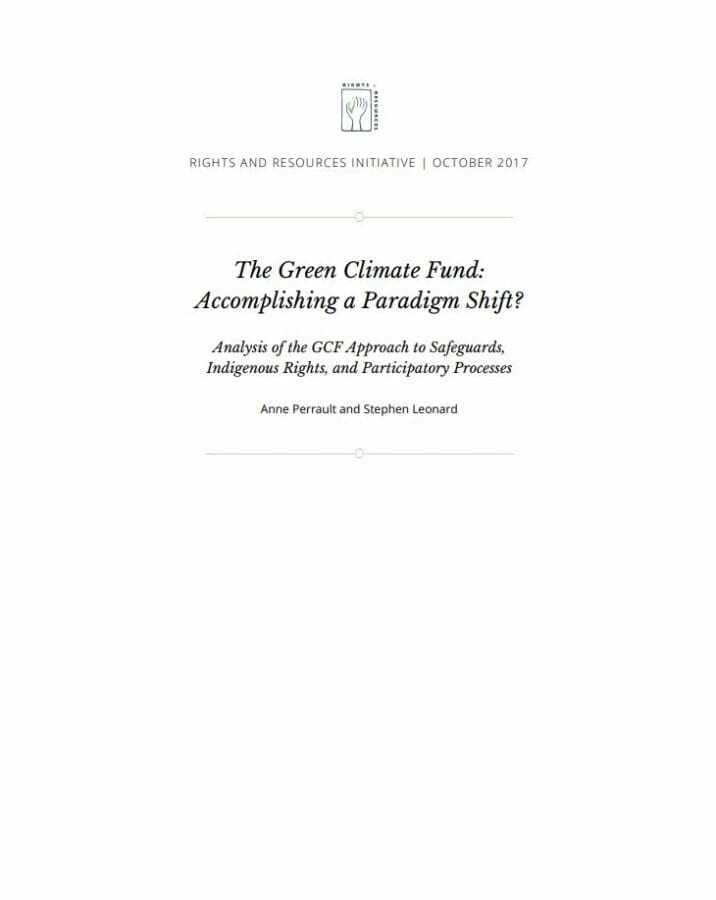Date: October 19, 2017
The Green Climate Fund (GCF), established in 2010 at the 16th Conference of Parties (COP16) under the United Nations Framework Convention on Climate Change (UNFCCC), is now the world’s largest climate financing institution. It has a current investment portfolio of 43 approved projects totaling around US$2 billion, and has 48 Accredited Entities (AEs) to support implementation, including UN agencies, banks, NGOs, and private companies.
Through its investments, the GCF aims to achieve a paradigm shift in developing countries, toward low-emissions development and climate resilience. GCF investments must indicate whether and how they could impact Indigenous Peoples, local communities, and women who are most at risk from the adverse effects of climate change (e.g. via environmental and social management plans). These goals, however, are currently being challenged by inadequacies in the Fund’s policies and frameworks. GCF safeguards fail to recognize the critical contributions of rural peoples to the maintenance of ecosystem services that are essential to international climate and development objectives, and to offer adequate protection for their land and resource rights.
Drawing on international standards and GCF policy documents, this report traces the adequacy and implementation effectiveness of the Fund’s current institutional frameworks across a representative sample of approved projects. Noting critical gaps in nearly every aspect of the Fund’s operational modalities and project approval processes, the report calls on the GCF to take progressive steps to make Indigenous Peoples’ and local communities’ rights a key part of its climate actions going forward.
https://doi.org/10.53892/MKMZ2578

